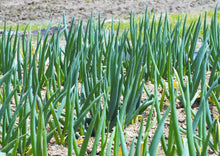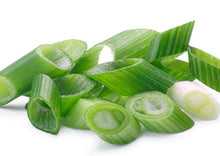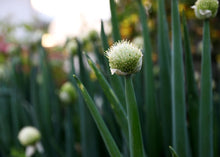Effortless green onions all season long! The Welsh onion is a delicious and easy-to-grow perennial alternative to green onions. Not only will they give you delicious oniony flavor for most of the year, but they also generously divide and spread, giving you more plants every year. Welsh onion utilizes the fresh green leaves for its wonderful flavor allowing the roots or bulb that typically are eaten to live. (Allium fistulosum)
Why We Love Them
Here are some of the reasons why we love Welsh Onions...
1) DELICIOUS - These onions are fantastic anywhere you'd use green onions. We find that they're best when added after cooking to preserve their amazing taste and texture.
2) EVERLASTING - Unlike bulging annual onions, these perennial onions will produce from early spring all the way through frost. They will rest during the winter and then spring back to life when temps warm up.
3) ABUNDANT - These onions will quickly grow and divide, giving you an entire everlasting green onion patch that you can enjoy for years to come.
How to Grow Them
Here's how to grow Welsh onions:
| SUN | FULL SUN |
| MOISTURE | CONSISTENT MOISTURE, BUT WELL-DRAINED |
| GROWING ZONES | USDA ZONES 6-9 (Not sure? Find your growing zone here) |
| SIZE | 18" TALL & WIDE |
| GROWING FROM SEED |
Indoors March / April sow ¼’’ deep in a flat. Grow out until they have a few strong true leaves. Transplant as bare roots into well draining and sunny garden soil. 1-2’’ spacing at the depth of the bottom of the green leaf. Keep weeded and moist. PRO TIP: Because these perennial onions are so effective at multiplying, it's best to locate them somewhere where you'd love them to spread. |
How to Harvest & Use Them
Harvesting these onions is a breeze! Just cut a few inches above the ground and they will quickly regrow for you. We like to spread these onions all around our food forest. They grow great around fruit trees. Harvest them regularly to stay on top of any rust or other fungal issues. If you do get issues, cut the foliage back and new healthy growth with regrow. These grow best in the cooler seasons of spring and autumn and can also be regularly thinned to keep good airflow which helps keep any disease issues down.







